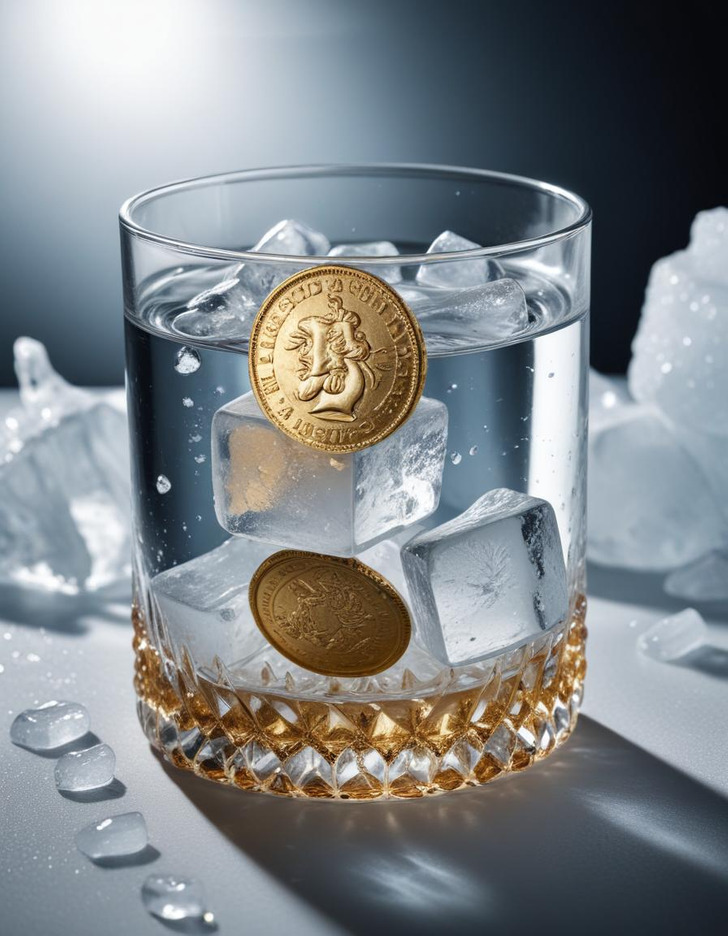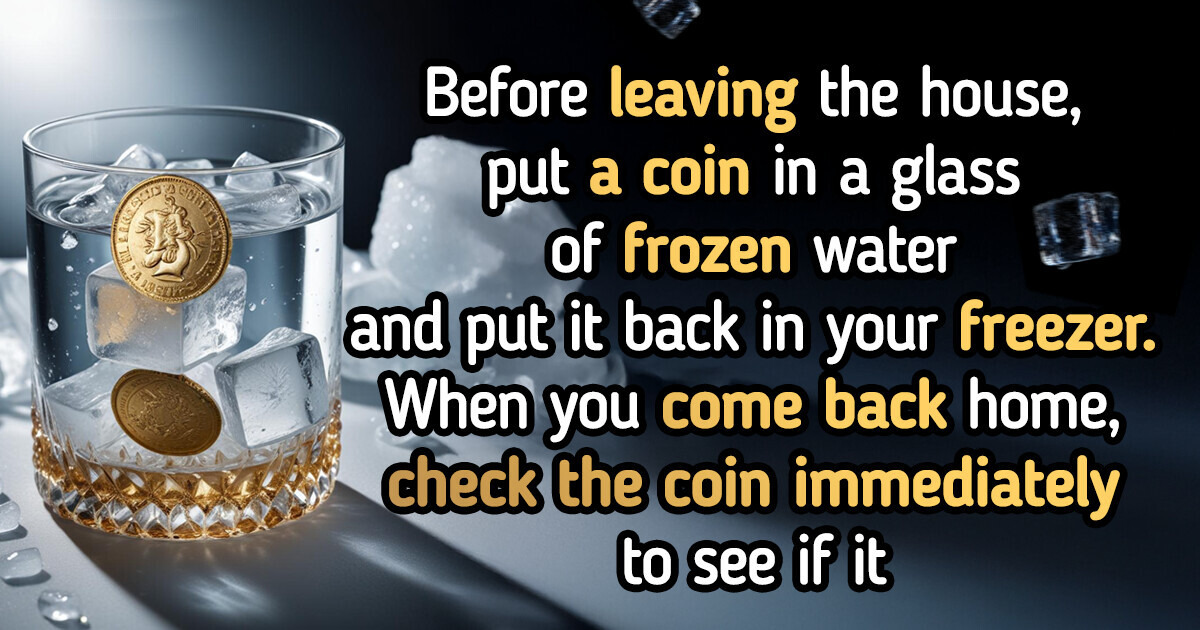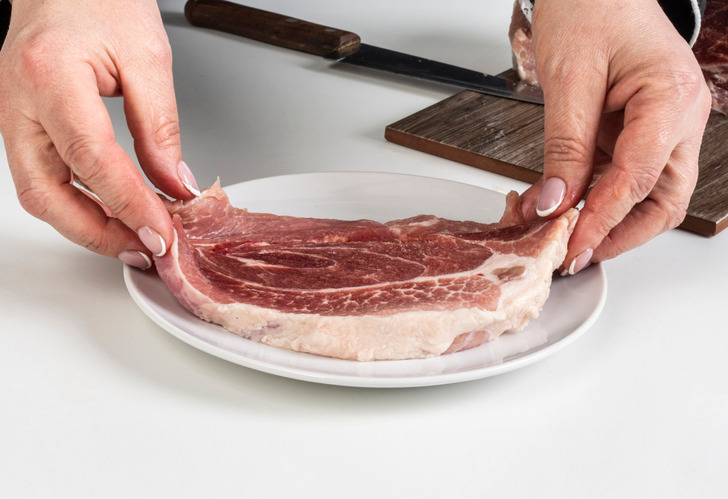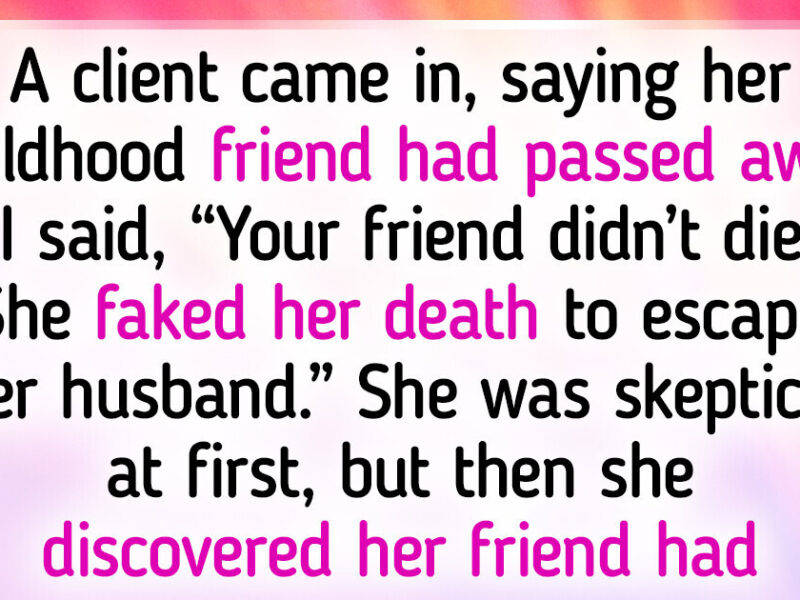Viral Trick: Why People Are Putting a Coin In a Freezer Before Leaving the House / Bright Side
Imagine this: you drop by your parents’ house while they’re away on vacation. Of course, it’s the perfect chance to peek into the freezer for a hidden stash of ice cream.
But instead of a sweet treat, you stumble upon something unusual—a frozen cup of water with a coin resting on top. Confused, you wonder what it’s doing there. Turns out, your parents might be onto something genius with this clever lifehack. Read on to discover why this simple trick is so smart!
A simple coin in your freezer could be a game-changer when you’re heading out on vacation.

Around the world, unusual weather patterns are becoming increasingly common—a stark reminder from nature that we need to care for our planet’s resources more responsibly. These shifts include unexpected heat waves in cooler areas, cold snaps in warmer regions, and intense weather events such as hurricanes, tornadoes, and severe storms in places that are typically calm.
Such events can frequently result in power outages. Thankfully, there’s a simple yet ingenious way to determine if a power outage occurred while you were away: freeze a cup of water, place a coin on top, and leave it in your freezer.
The position of the coin can reveal crucial information about power outages.

Have you ever come home from work or vacation and noticed your digital clock displaying the wrong time? You might think, “There must not have been a power outage.” But if one did occur, there’s no easy way to tell how long it lasted. A prolonged outage could have caused your food to thaw, spoil, and refreeze once the power returned—leaving no visible clues.
Even for a short weekend getaway, the “coin in the freezer” trick is a smart precaution. Before leaving, freeze a cup of water and place a coin on top. When you return, check the coin. If it’s still on top, your food is safe. However, if it has sunk to the bottom, the power was out long enough for the ice to melt, meaning your food may have thawed and spoiled.
All it takes is setting up this hack correctly.
Food that has thawed and refrozen might appear fine, but it could harbor harmful bacteria if it was left at room temperature for several hours or more. According to USDA guidelines, food kept unrefrigerated for over two hours can develop bacteria that may cause illness when consumed. That’s why this simple and cost-free trick is a smart way to determine whether your food is still safe.
Here’s how to set it up:
- Use a clear glass cup or plastic Tupperware container.
- Fill it with water and let it freeze completely, uncovered.
- Once frozen, place a coin on top of the ice.
When you return, check the coin. If it’s sunk halfway down, the freezer lost power briefly, allowing some ice to melt before refreezing—likely indicating the food is still safe.
However, if the coin has reached the bottom, it means the freezer was off long enough for everything to thaw completely, possibly reaching room temperature. In that case, it’s safer to discard all the food in your fridge and freezer.
Here’s how to determine if your frozen products need to be discarded.
When it goes about food, especially frozen food, some extra caution will always be useful. And here’s how you tell visually that your frozen food has gone bad.
Ice crystals in the packaging
- This means water molecules in your food have made their way outside, towards the colder parts of the freezer. It’s not a danger to your health, but it isn’t exactly tasty either. The food loses a lot of its moisture and this has negative effects on both the taste and the texture.
Change in color
- This goes mostly for meat. For example, if you notice a steak is starting to get a little grayish instead of its usual red color, it’s time to throw it into the bin. The gray color is a sign that it has almost passed its expiration date. The same is true for vegetables: if they’re losing their fresh color, it’s best not to eat them anymore.
Meat juices
- If you notice that the frozen meat in your freezer has spilled some pinkish meat juices, you know you can no longer eat it. These juices indicate that the temperature of your freezer isn’t stable and that the meat has thawed and has frozen again. Throw it away!
Smell
- When the frozen food is smelling a bit funky, that’s your sign to throw it off in the bin without thinking much.
And here’s yet another lifesaving tip from TikTok. A woman explained why other women should never turn on the light immediately after they return home.




